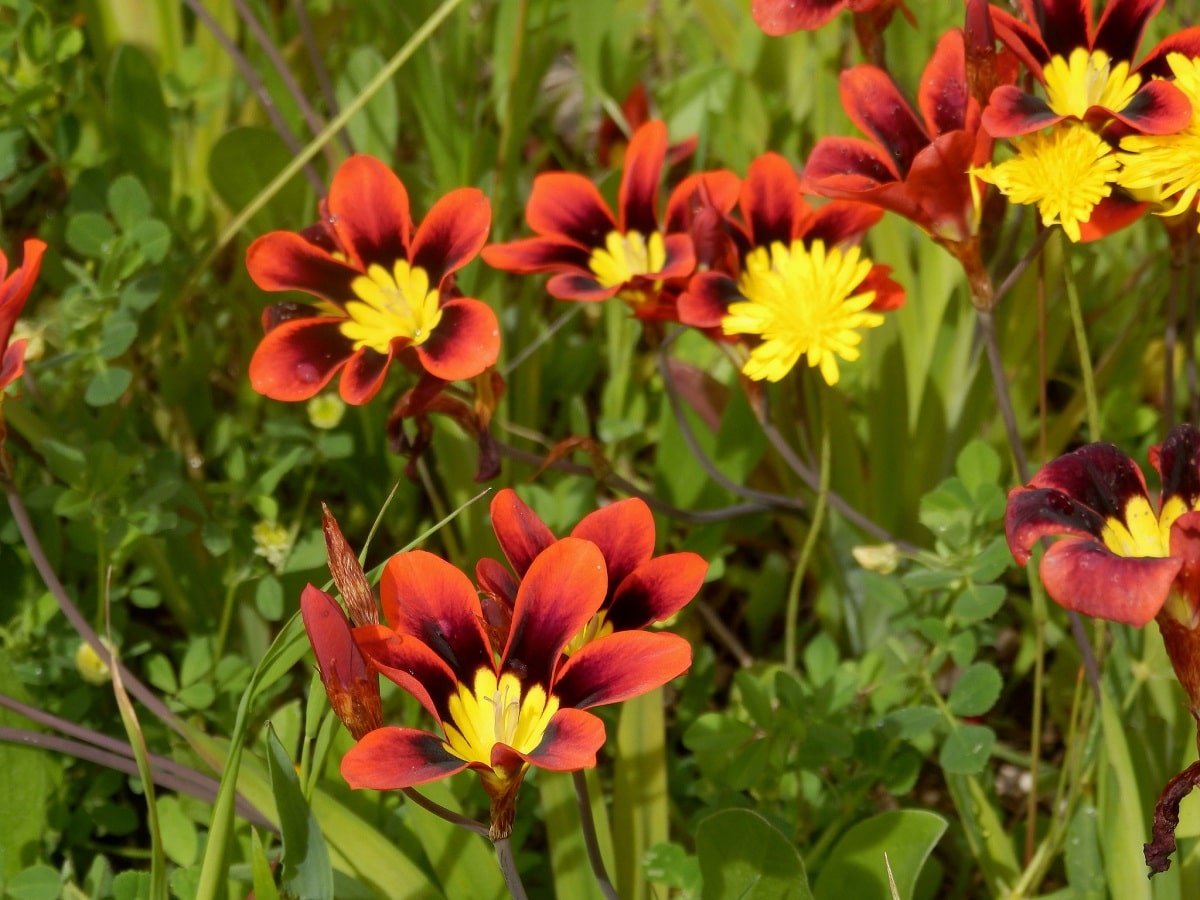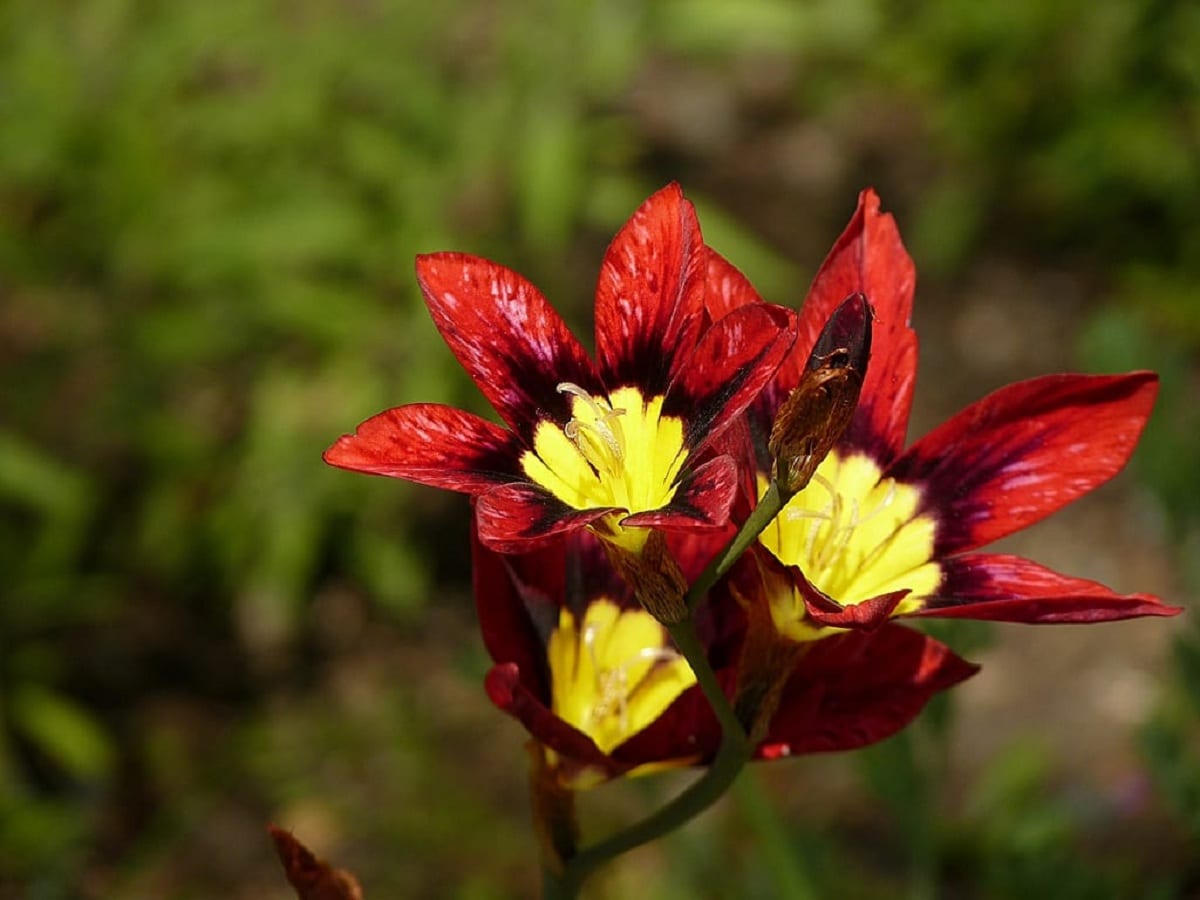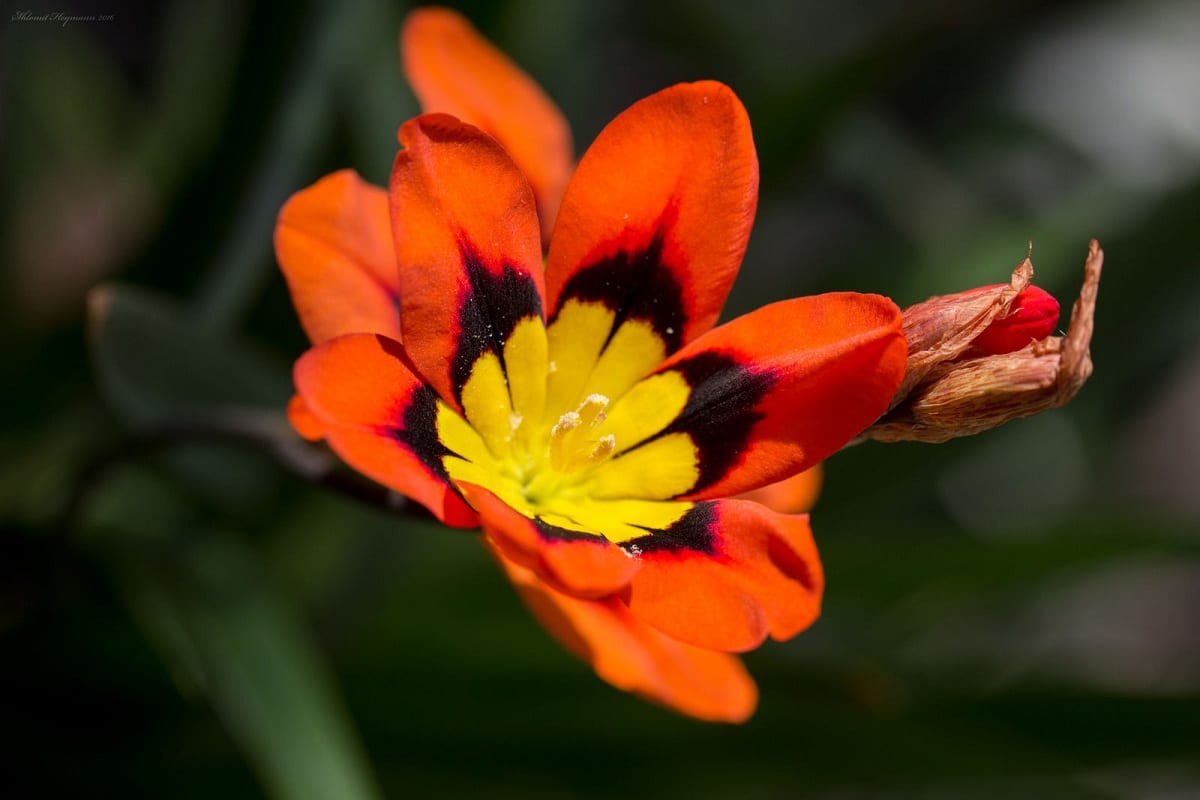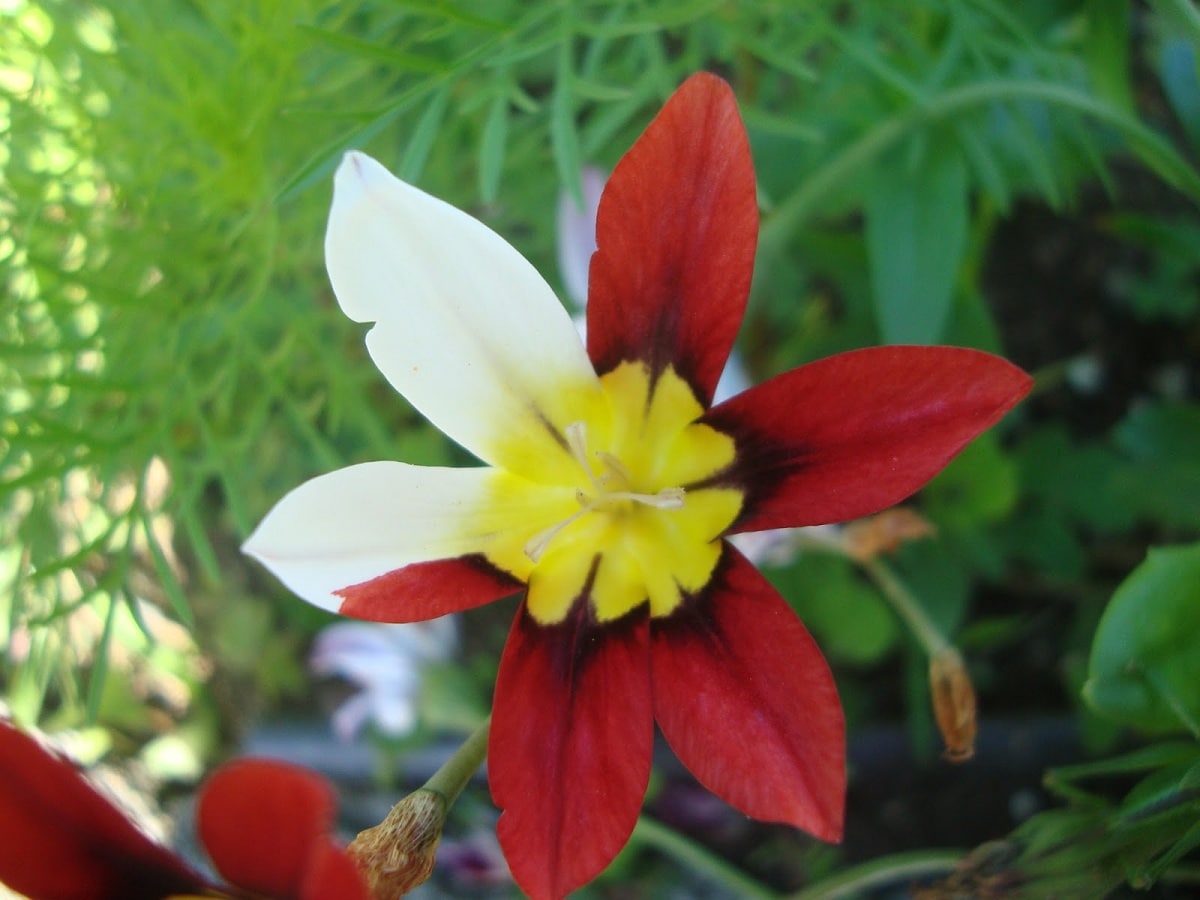
Today we are going to talk about a plant with very beautiful flowers that belongs to the Iridaceae family. It's about the harlequin. Within the genus Sparaxis we have about 12 bulbous species native to South Africa. Among them, the tricolor Sparaxis stands out, which is known by the common names harlequina, Esparaxis and Flor de harlequín. It is used for the decoration of outdoor spaces, especially since it has a bright and attractive bloom. It can be easily identified by its orange color.
In this article we are going to tell you about all the characteristics, uses and care of the harlequin.
Key features

It is a type of perennial bulbous plant with a very beautiful flowering. Its leaves are deep green and form a line being completely flat. The most striking and ornamental of this plant are its flowers. They are bright orange flowers and also have yellow-black spots in the center. Hence the common name of tricolor. Each flower is bowl-shaped and is about 5-8 centimeters in diameter. They have 6 petals of various colors forming streaks. Flowering takes place during the spring season as temperatures begin to rise and the weather is fine. These flowers have a small funnel-shaped tube in the center to allow pollinators to catch pollen.
Like other plants belonging to the genus Sparaxis, it has floral bracts that are a distinctive feature of this genus. These flower bracts are dry and papery in appearance. They have a pale color and brown spots. The leaves of the plants of this genus are pale green, slightly fleshy, narrow, and have a lance-like shape. They are also known as magic wand flower and it can reach a height of between 10-30 centimeters.
If we go towards its natural distribution area, it blooms around the month of September, while in the United States it blooms during the months of March and April. Every flower has both male and female reproductive organs so the harlequina flower can be perfectly pollinated by beetles and tabanid flies. As in other species of this group, its fruits are capsules that have around 24-30 spherical seeds with a hard texture and a shiny appearance. The seeds are generally brown in color.
Harlequin habitat and distribution

The harlequin flower is endemic to the northwestern Cape Province, South Africa, in a region of high plant diversity known as the Cape Floral Region. The species has also been introduced to California, United States. Most individuals, as with other Sparaxis species, grow in the winter region. Prefers clay soils located in southern Africa. Interestingly, in the United States of this species is able to develop in soils near gardens, dump sites and abandoned houses. This is not common in its original natural habitat.
According to the red list of plants in South Africa it is classified as vulnerable. This means that the number of individuals of this species is decreasing due to various environmental impacts mainly caused by humans. Naturally and in the wild, its range is being seriously affected, which is why it has become a vulnerable species in the face of danger of extinction.
Due to their bright and colorful flowers they are highly valued as ornamental plants. This has meant that the harlequina will be widely cultivated in many areas. Through cultivation, it has been possible to obtain hybrid specimens that mostly come from lights that include this species. However, the environmental impact that these practices cause on the wild population is unknown. The greatest threat that these crosses can cause in the harlequin is to lose the genetic difference between the specimens. Loss of habitat and alteration of the natural environment due to agriculture in the Cape Floral Kingdom. It is the main cause of the threats of the harlequin.
Conservation and uses

In terms of conservation, the Cape Floral Kingdom of South Africa is considered a global biodiversity zone and has been designated as World Heritage Site and Global Center for Plant Diversity, being home to the largest non-tropical concentration of higher plant species in the world. And it is that the entire region where the harlequina is distributed faces numerous threats as we have mentioned previously. This means that it has a good number of national parks and protected areas to safeguard all these species. It must be taken into account that in none of these protected areas do you find the harlequin.
Numerous efforts are being made to eliminate non-native plants and stimulate the regeneration of all natural vegetation. This is how they intend to protect all hydrographic basins.
Regarding its uses, It is used on terraces and balconies, as cut flowers and rockeries, mixed borders and curbs. In all these places its main function is decoration.
Harlequin care
Let's see what are the main care that the harlequina needs. First of all is its location. It must be in full sun, although it can also be in semi shade. It is not convenient for you to resist frost at all, although it can endure some sporadically and that is not of great intensity. It is important that the soil has good drainage. Soil drainage is the ability to filter rainwater or irrigation and not accumulate. And it is that this flower does not tolerate flooding. We can make a mixture of normal garden soil so that a quarter of sand and another quarter of peat are added.
Irrigation should be moderate, being more or less a glass of water for each plant and every two days. In these cases, it is better to fall short when it comes to watering, than to overdo it with water and cause the roots to rot due to suffocation. Compost is recommended to be used in winter and is a mixture of peat and manure. This will create a surface layer that protects the bulbs from the cold and ensures good flowering.
It does not need pruning, you can only remove the withered flowers. They can be propagated well by dividing the bulbs. They are planted in autumn at a distance of 5 centimeters between them and a depth of 8 centimeters.
I hope that with this information you can learn more about the harlequin and its characteristics.